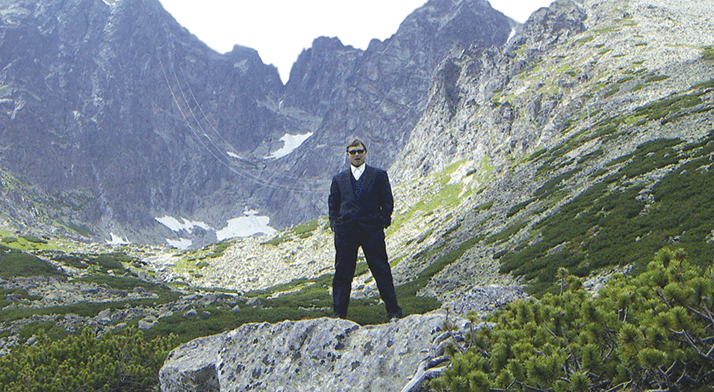
Among your firsts is the original example of measuring proteins using mass spec. What is the background to that? I was trying to synthesize peptides and proteins spontaneously using micellar catalysis. Other than size-exclusion chromatography we didn’t have a good way of figuring out what we’d made. A professor of mine, Ron Macfarlane, had invented californium-252 plasma desorption mass spectrometry – a real breakthrough – that looked like it might work for proteins. Lo and behold, we were able to nail down high molecular weight materials for the first time. It wasn’t recognized as an achievement at the time, partly because we emphasized the micellar catalysis in the paper, but I was enthralled by the method and it made me realize that the real ingenuity in science often comes from the people that invent methods and devices. Once you have those, anybody can and does do the rest.
That was an exciting start to your career. How did you maintain that level of engagement? The most exciting thing of all is that I have been able to continually do new things. At any point in my career, what I was doing was exciting to me; five years earlier or later I’d be doing something quite different and be equally excited. That’s what keeps me fresh. Being an expert in the same area for 20 to 30 years would be tremendously boring to me. My PhD mentor once told me that any person who has made a contribution to an area will become a detriment to it if they stay in it long enough! Do you go into new areas and end up thinking, “what have I got into here?” Absolutely. I am constantly coming up with things to pursue, but they are not always feasible. In fact, the majority of projects don’t work out. The important thing is knowing when to go in a different direction or to bail completely. You get an innate sense for that although if I am tackling an extremely important problem or if the work has really piqued my curiosity, I focus on it a little longer. The freedom to pursue anything you want often takes you in more interesting directions than the original planned research.
Is the development of cyclodextrins for enantiomer separations an example of that? It is. In the catalysis work, micelles contaminating the catalysis reaction mixture were affecting the chromatography. That’s what got me thinking about using micelles as a chromatographic mobile phase in place of organic solvents. We then looked for things other than micelles that would do this and found cyclodextrins, which in the 1970s were expensive and esoteric materials. They worked quite well so we developed them as a stationary phase. Our interest was in molecular recognition and selectivity, rather than in developing a commercial opportunity, which was an afterthought. Of course, everybody jumped on that possibility and ignored the theory and the mechanism – they just wanted to know whether it could separate molecules. Right up until it happened, it hadn’t dawned on me that that’s what would catch the most attention. That’s surprising, as you are known for commercialization of your research. Originally we never considered it, but when our work had a huge practical impact it was hard to ignore. And I’ve come to see it as important. If you publish something that nobody uses or even cites, it doesn’t matter that you ever did it – and that’s the case for most research, which consists of jumping on the bandwagon or making incremental changes. If I see another nano-something, I can almost turn my mind off right there. Let’s face it, nano is just another word for colloid science, which has been around for over 100 years. Going in a completely new direction – that’s what counts. And if it has a practical application, so much the better.
What is the biggest challenge you have faced in work in the past 12 months? Without a doubt it’s that there’s not enough time. I occasionally do experiments but opportunities are more and more rare, and it is the thing I miss the most. If I am here and not traveling, I do the next best thing: I go to the lab to check progress, discuss problems and watch experiments being performed. That way I get to examine and discuss the most recent results. The paperwork, committee meetings, etc., are not fun. Going into the lab, getting interesting new results is fun, I hope I’ll keep it going until I die. How do you feel that analytical chemistry is faring? It doesn’t get the credit it deserves, definitely not, and it doesn’t get the funding commensurate with its contribution to science and society. Despite this, there is no doubt that analytical chemistry is healthy and competitive. It is in good shape. And it provides great job opportunities, particularly separations and mass spectrometry. People in all branches of science need these.
